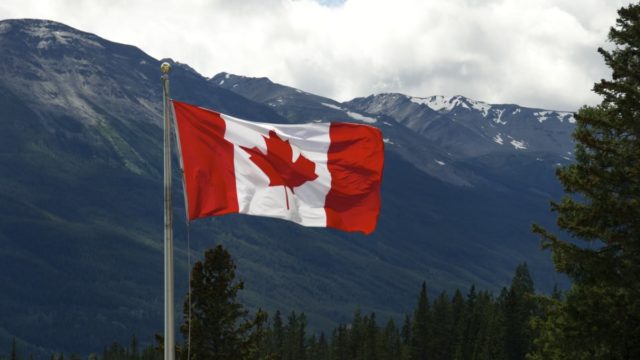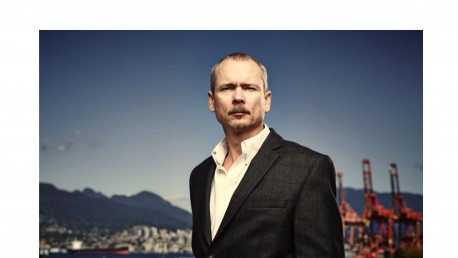Editor’s note: We’re pulling this piece on the right to water, originally published last month, out of the Ecojustice archives in honour of Earth Day.
—
As the international community comes together this week in support of World Water Day, I can’t help but give pause to the startling inequities around drinking water quality and access within Canada’s borders.
While Canada joined the international consensus and (after some reluctance) recognized the right to water at the United Nations Conference on Sustainable Development in 2012, it still fails to live up to that ideal here at home.
At any given time, there are thousands of Canadians who cannot safely drink the water out of the taps in their homes. In some extreme cases, they may not even have indoor plumbing. The worst part is that for many, help isn’t on the way.
Canada lacks a national water law and rigorous, enforceable water quality standards. Instead, it relies on an uneven patchwork of provincial water policies to protect drinking water. This means that from coast to coast to coast, our drinking water is not equally protected. And while most major Canadian cities have relatively sophisticated water treatment facilities, many rural, low-income, or First Nations communities lack such infrastructure and rely on untreated or minimally-treated water.
Perhaps nothing can illustrate this startling inequity better than what happened in Manitoba earlier this year. In January, Winnipeg was put under its first city-wide boil-water advisory. For Shoal Lake 40, the First Nations community whose territory is home to Shoal Lake, Winnipeg’s drinking water source, it was just business as usual. The community has been under a boil-water advisory for more than 17 years.
Two days later, Winnipeg’s advisory was lifted. To this day, Shoal Lake 40 residents still can’t safely drink the water out of their taps.
In the absence of a national water law and adequate funding, communities under federal jurisdiction, such as First Nations reservations, have virtually no legal protection of their drinking water. In fact, according to a 2009 study by the UN, First Nations homes are 90 times more likely to be without safe drinking water than other Canadian homes.
And so, it is hardly surprising that drinking water advisories were in effect in 126 First Nation communities across Canada as of January 2015. Ironically, labour laws compel the federal government to provide safe water to its employees who live and work on First Nations reserves — even if residents are forced to go without clean, safe drinking water in their homes.
Non-First Nation communities can also be impacted. My client Melissa King used to live in Harrietsfield, N.S., where years of industrial activity had contaminated the well water that her family depended on. The water was so laden with toxic chemicals that she was afraid to bathe her two-year old son at home. With no remedy likely in the near future, she recently made the difficult decision to leave her home.
For these people, not being able to use the water in their homes isn’t simply an inconvenience. It is something that poses a very real threat to their health and quality of life. Studies show that communities that lack access to safe, clean drinking water face significant health risks, including elevated rates of waterborne illnesses, pneumonia, influenza, whooping cough, and other infections.
This is the ugly truth about water protection in Canada. It is unacceptable. No matter where we live, every Canadian should have access to safe, clean drinking water.
Here’s an even uglier truth: Environmental inequities don’t start and stop with access to safe, clean drinking water. Canada’s failure to create and enforce strong environmental laws also threatens the air we breathe and the health of the communities where we live. These failures do not affect us all equally. Time and time again, low-income or First Nations communities bear a disproportionate burden of environmental harm.
Unlike the United States, where the Environmental Protection Agency gives mandatory consideration to environmental justice in their evaluation of projects and regulation development, Canada has no laws that address the concept of environmental justice — the fair distribution of environmental benefits and burdens, without discrimination on the basis of socio-economic status, race, ethnic origin, or residence on an Aboriginal reserve. This is one reason why, from Shoal Lake 40 to Melissa King and her family, we are confronted with example after example of environmental injustice within our own borders.
It is hard to believe that these injustices still persist in our country. It’s even harder to believe that although 181 of the 193 countries in the United Nations support a human right to live in a healthy environment – which includes access to clean, safe drinking water – Canada is not one of them.
It should be. It is time for Canada to recognize our right to a healthy environment in the Charter of Rights and Freedoms. A Charter right would give us a new, powerful legal tool to fight environmental injustices and ensure that even the most vulnerable and isolated among us can assert their right to turn on the tap and drink the water that comes out of it.
Who can deny that that every Canadian — no matter who they are, or where they live — should be entitled to a minimum standard of environmental quality? Our highest law must recognize that environmental rights are human rights. Until then, the injustices in Shoal Lake 40, Harrietsfield, and far too many other Canadian communities will continue — and the fight to right these wrongs will not get any easier.
Photo by Jaimie Duplass via Shutterstock
While Canada joined the international consensus and (after some reluctance) recognized the right to water at the UN conference on Sustainable Development in 2012, it still fails to live up to that ideal here at home.



